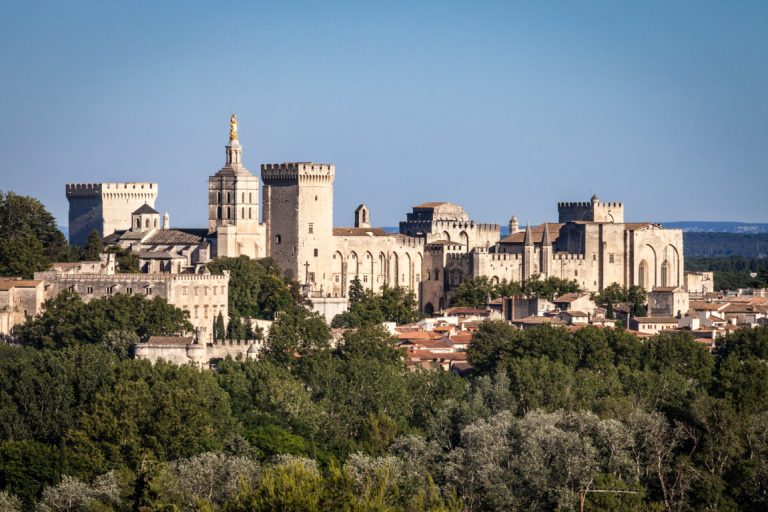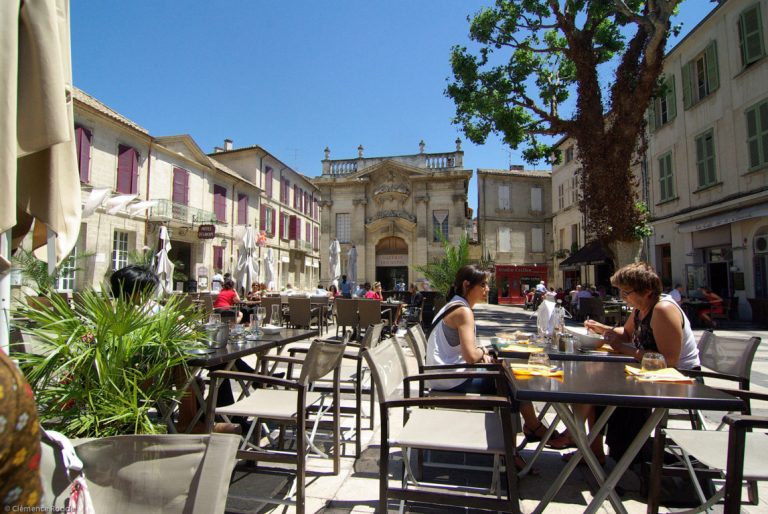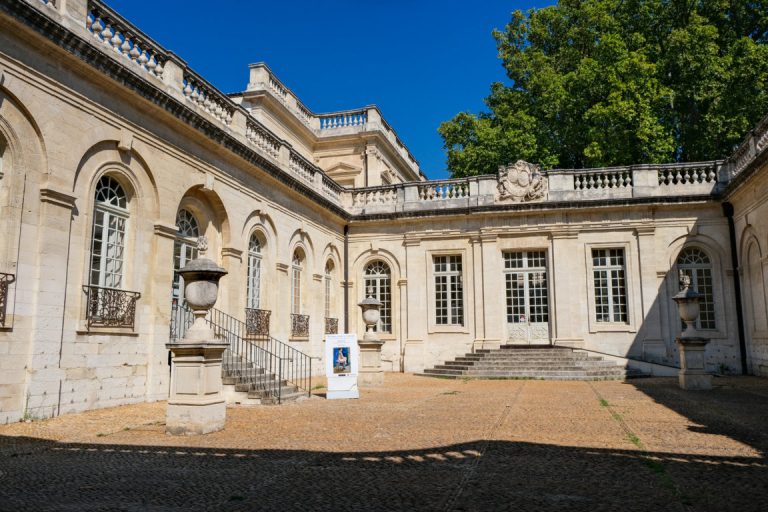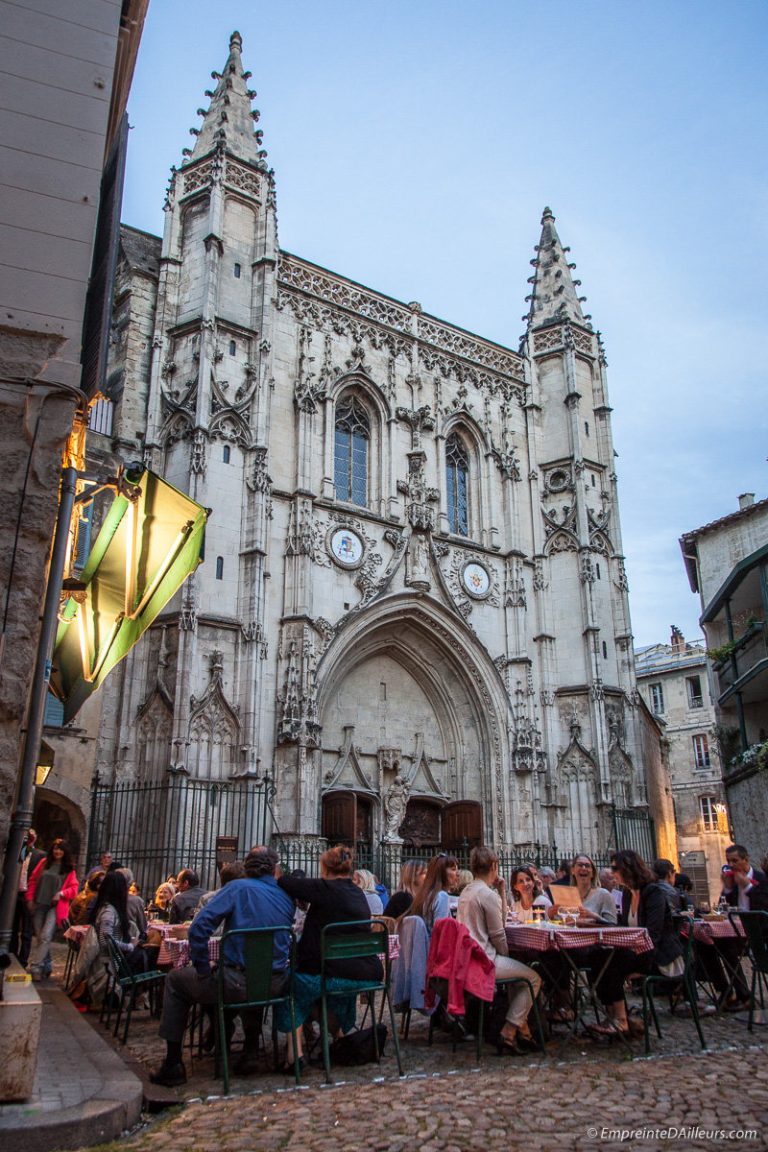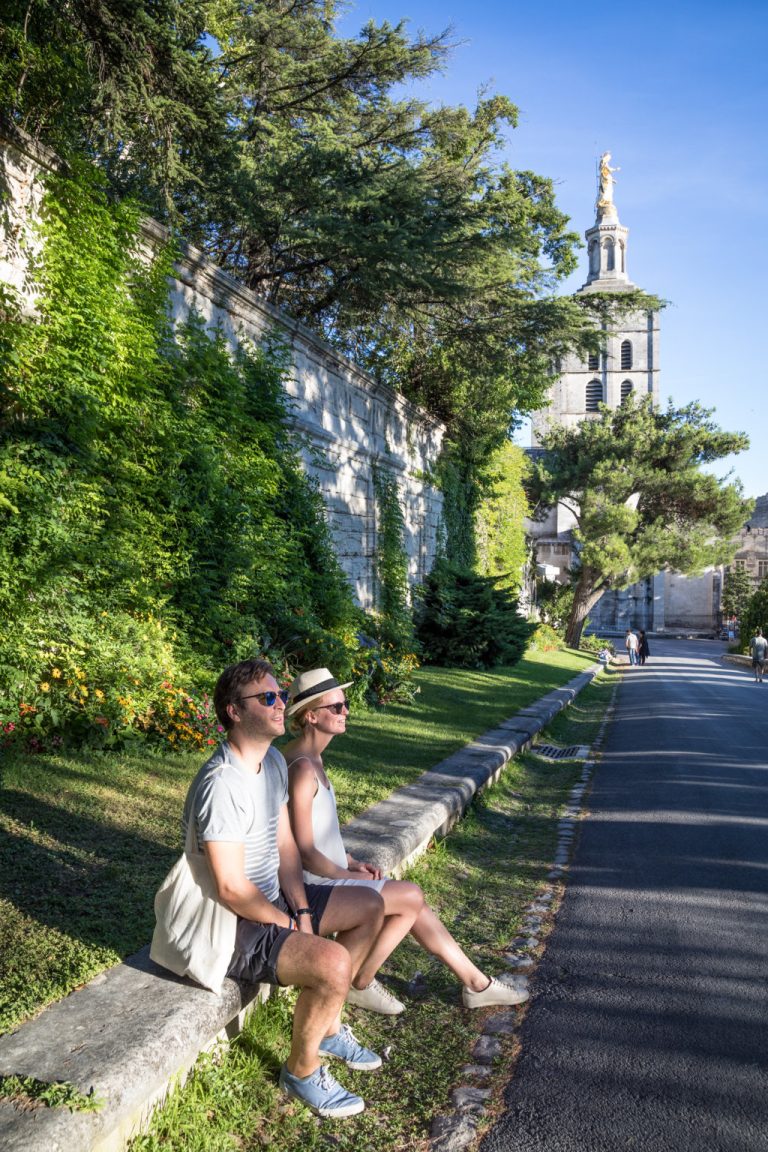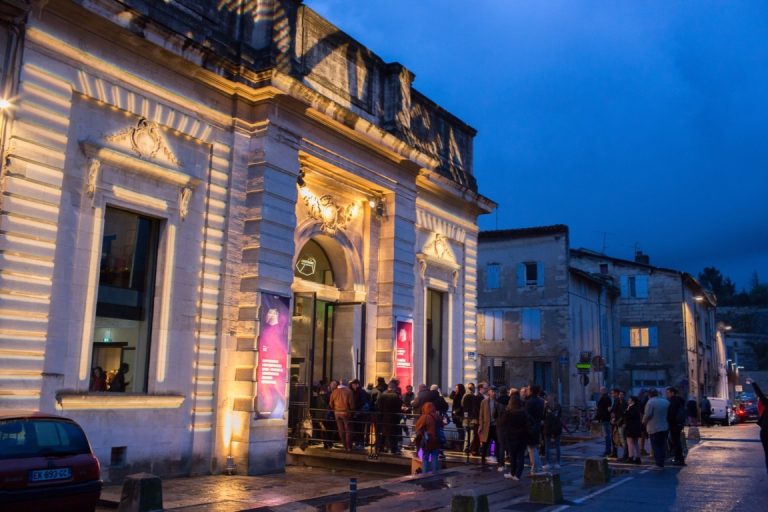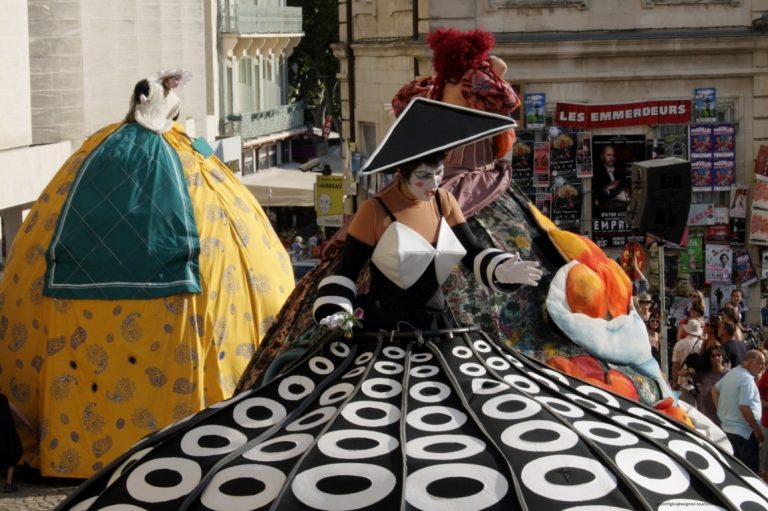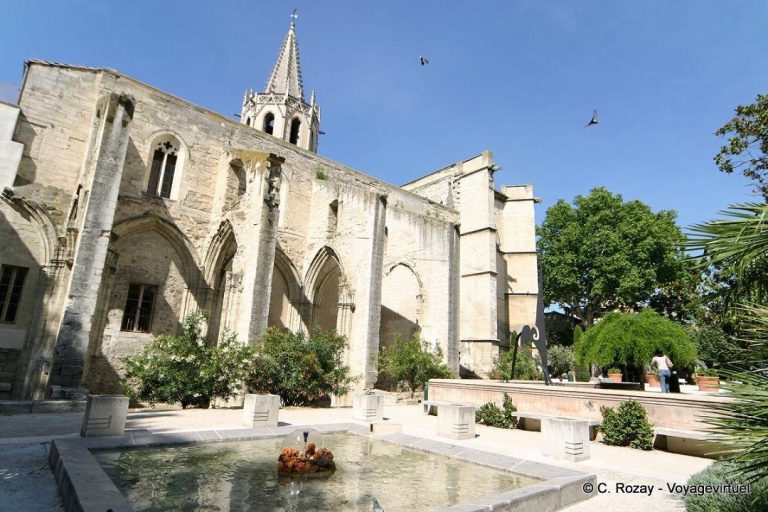Avignon, the Pearl of the Rhône
In the heart of Provence, gently overlooking the banks of the Rhône and protected by the majestic Rocher des Doms, lies a city that encapsulates all the beauty, culture, and charm of the most authentic France: Avignon.
With just over 90,000 inhabitants, Avignon retains a serene and relaxed pace of life, while at the same time offering a surprising wealth of cultural, historical, and scenic attractions. It is much more than just a stop on a river cruise itinerary, it is a destination worth experiencing to the fullest. Its strategic location in the heart of Provence, only an hour from Marseille (with its international airport) and just two and a half hours from Paris by TGV, makes it easily accessible and ideal for longer stays. With an exceptionally favorable climate boasting over 300 days of sunshine a year, Avignon welcomes visitors in every season with its warm light and clear skies.
Avignon
But what truly makes Avignon unique is its extraordinary past: in the 14th century, it was the capital of Christianity and one of the most powerful cities in the known world. For nearly 100 years, it was the residence of no fewer than seven popes and then two antipopes, the only time in history when the papal seat was permanently located outside of Italy. This epochal chapter has left an immense and tangible legacy, still alive today in the majestic Gothic architecture of the Palais des Papes, in its churches, bridges, and the city walls that still encircle the historic center.
For those arriving in Avignon aboard a river cruise, the first impression is almost theatrical. Sailing along the Rhône, the city’s silhouette slowly reveals itself: perfectly preserved medieval walls, the towers of the Palais des Papes rising into the sky, and the legendary Pont Saint-Bénezet stretching into the river like a bridge to the past. It’s a breathtaking vision, a perfect prelude to what lies beyond the shore.
The historic and spiritual heart of Avignon beats in the majestic Palais des Papes, one of the most impressive examples of French Gothic architecture. Built in the 14th century when Avignon became the seat of the papacy, the palace was home to seven of the nine popes. Covering 15,000 square meters (161,500 square feet), the building invites visitors to explore 25 rooms, including the Grand Audience Hall, the Chapel of Saint John frescoed by Matteo Giovannetti, and panoramic terraces offering spectacular views of the city and the Rhône.
Every year, the palace hosts major international exhibitions, reinforcing its role not only as a historic site but also as a vibrant and dynamic cultural center: Picasso, Rodin, Bottero were among the many artists celebrated in this outstanding building.
Visiting the Palais des Papes is not just recommended—it’s essential to understanding the historical and spiritual soul of Avignon.
PlaceCrillon CRodde
CourCalvetOlivierTresson
No mention of Avignon would be complete without its most famous symbol, the Pont Saint-Bénezet, known worldwide thanks to the song “Sur le pont d’Avignon.” Today, only four of its original twenty-two arches remain, but its beauty and charm remain intact. According to legend, it was a young shepherd named Bénezet who built it, guided by a divine voice. Constructed between 1177 and 1185, the bridge was an engineering marvel of its time and a vital connection between the two banks of the Rhône. Today, walking along the remaining stretch offers genuine emotion, especially at sunset, when the river reflects the city’s golden lights.
Within Avignon’s walls lies a maze of medieval alleys, lively squares, and noble mansions that seem straight out of an illustrated history book. The center is perfect for exploring on foot: every corner reveals a church, a fountain, or a hidden courtyard. The vibrant Place de l’Horloge is the beating heart of the city, home to the City Hall and the opera house, surrounded by cafés with outdoor seating. Further on, the Quartier des Teinturiers, crossed by a canal dotted with old water wheels, offers a bohemian atmosphere, with artists’ studios, vintage boutiques, and cozy venues.
Avignon is a city that lives and breathes culture. Beyond the Palais des Papes, visitors can discover hidden treasures in the city’s museums. Avignon boasts no fewer than ten museums, covering painting, sculpture, and natural history, offering an impressive variety of collections. Among these, six are public and offer free admission: the Musée Calvet, featuring works by Manet, Chaïm Soutine, or Joseph Vernet (a local) and known for its peaceful garden; the Archaeology Museum; the Palais du Roure, dedicated to Provençal culture; the Requien Natural History Museum; the Musée du Petit Palais-Louvre in Avignon, home to one of the largest collections of medieval European painting; and finally, the Bains Pommer, a charming 19th-century public bathhouse.
Place Saint Pierre EmpreinteDAilleurs
CathedraleNDDEmpreinteDAilleurs
These are joined by four outstanding private museums with admission fees: the Musée Angladon, which houses works by 19th- and 20th-century artists like Cézanne, Modigliani and the only Van Gogh painting remaining in Provence; the Collection Lambert, a key venue for contemporary art; the Musée Vouland, dedicated to decorative arts; and the Maison Jean Vilar, which celebrates theater and the cultural legacy of the founder of the Avignon Festival: Jean Vilar. In every corner, Avignon continues to tell its story of art, culture, and passion, offering visitors a timeless journey into the heart of European creativity.
Discovering Avignon also means discovering its cuisine. Local gastronomy is a triumph of Mediterranean flavors, intense aromas, and genuine ingredients. Olive oil, garlic, ripe tomatoes, and Provençal herbs: every dish tells the story of the land and its traditions. A visit to Les Halles, the indoor market, is a must, where local producers offer artisanal cheeses, fresh fruits and vegetables, warm bread, and specialties like tapenade or nougat. For those seeking a more refined experience, the city offers Michelin-starred restaurants and elegant bistros where Provençal cuisine takes on creative, modern twists. No visit to Avignon is complete without tasting a glass of Châteauneuf-du-Pape, the celebrated red wine produced just outside the city. Many cruises offer wine-tasting excursions to local cellars to discover the secrets of this legendary terroir.
Avignon is not only history and art, it’s also nature, relaxation, and outdoor activities. Nature lovers can head to Île de la Barthelasse, a green island in the middle of the Rhône perfect for walking or cycling. Here, among fields, ancient trees, and rare silences, you’ll find a stunning view of the old city. For a romantic touch, a sunset cruise on the river offers unforgettable moments. Culinary enthusiasts can join a Provençal cooking class with local chefs or book a gourmet dinner with a view of the papal palace. Families will find plenty of kid-friendly activities too: puppet shows, creative workshops in museums, and guided tours tailored to younger audiences. For the more adventurous, there are kayaking tours on the Rhône, e-bike excursions, and vineyard hikes.
A stay in Avignon can easily become a starting point for discovering the treasures of Provence. Across the river from Avignon, you will find the quaint little town of Villeneuve-Lès-Avignon, with great sites, including Val-de-Bénédiction Monastery and the St André Fort with its wonderful mediterranean gardens.
Within a few kilometers are fairytale villages like Gordes, Roussillon, Les Baux-de-Provence, and Saint-Rémy-de-Provence. Each place has its own unique charm: lavender fields, Provençal markets, perched castles, and breathtaking panoramic views. Art and photography lovers can follow in Van Gogh’s footsteps in Arles, while archaeology enthusiasts shouldn’t miss the Pont du Gard, a perfectly preserved Roman aqueduct and a symbol of ancient engineering mastery.
On a journey along the Rhône, Avignon is much more than a stopover: it is an encounter with beauty, a harmony of past and present, of art and nature. Perfect for culture lovers, magical for romantics, inspiring for explorers, Avignon is a versatile destination, able to adapt to every type of traveler. Those who arrive in Avignon by cruise know right away they’re in the right place at the right time. Whether it’s the relaxed atmosphere, the city’s natural charm, or that irresistible mix of history, fine wine, and postcard-perfect views, the experience leaves lasting memories full of color, flavor, and authentic beauty.
Don’t miss news, updates, and reviews from the world of cruises on Cruising Journal.

